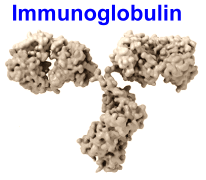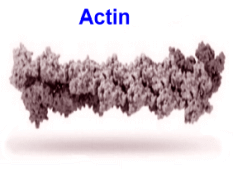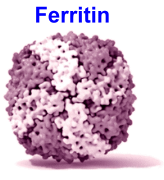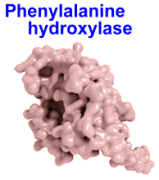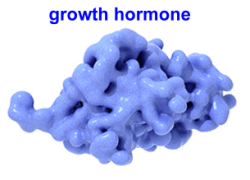  Protein is found throughout the body, in muscle, bone, skin, hair, and every tissue. It makes up the enzymes that power many chemical reactions and the hemoglobin that carries oxygen in your blood.
Protein is found throughout the body, in muscle, bone, skin, hair, and every tissue. It makes up the enzymes that power many chemical reactions and the hemoglobin that carries oxygen in your blood. Proteins are large, complex molecules that play many critical roles in the body. They do most of the work in cells and are required for the structure, function, and regulation of the body's tissues and organs. The body obtains protein from the food we eat. Proteins make up about 42% of the dry weight of our bodies. 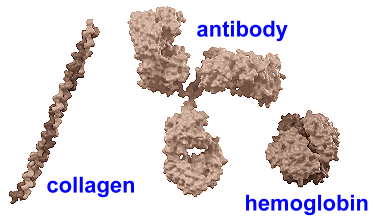 The protein collagen, which holds our skin, tendons, muscles, and bones together, makes up about a quarter of the body's total protein. All of our cells are packed with protein molecules. Different arrangements of amino acids can make proteins that are extremely strong, as in silk fibers, or elastic, as in skin. Proteins can interlock with other molecules. For example, each type of antibody in our blood has a unique arrangement of amino acids at its tips that can attach to specific pathogens, marking them for destruction by the immune system. The protein collagen, which holds our skin, tendons, muscles, and bones together, makes up about a quarter of the body's total protein. All of our cells are packed with protein molecules. Different arrangements of amino acids can make proteins that are extremely strong, as in silk fibers, or elastic, as in skin. Proteins can interlock with other molecules. For example, each type of antibody in our blood has a unique arrangement of amino acids at its tips that can attach to specific pathogens, marking them for destruction by the immune system. 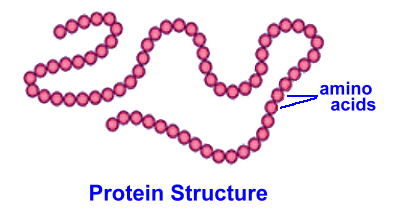 Protein is made from twenty or so basic building blocks called amino acids. Our body doesn't store amino acids, so it has to make them, either from scratch, or by modifying others. Protein is made from twenty or so basic building blocks called amino acids. Our body doesn't store amino acids, so it has to make them, either from scratch, or by modifying others. Nine essential amino acids - histidine, isoleucine, leucine, lysine, methionine, phenylalanine, threonine, tryptophan, and valine - must come from food. 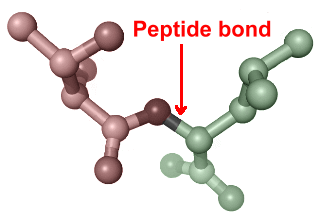 Proteins are large molecules. Anywhere from 50 to 2000 amino acids can make up a protein molecule. Proteins are large molecules. Anywhere from 50 to 2000 amino acids can make up a protein molecule. The bond that joins together amino acids to become proteins is called a peptide bond. This bond is an amide bond, which a type of covalent bond that is created by the chemical reaction between the amino group of one amino acid and the carboxylic group of another. One molecule of water is created as a byproduct. 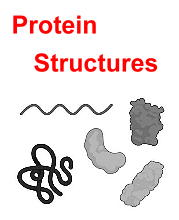 When joined, amino acids form chains called polypeptide chains, which eventually form the protein structure. A protein contains at least one long polypeptide; a single protein can consist of several specific sequences of amino acids. Proteins perform a vast array of functions within organisms, including catalysing metabolic reactions, DNA replication, responding to stimuli, providing structure to cells and organisms, and transporting molecules from one location to another. Proteins differ from one another primarily in their sequence of amino acids, which is controlled by the nucleotide sequence of their genes, and which usually results in protein folding into a specific 3D structure that determines its activity. Examples of protein functions
|
